#christian ix of denmark
Explore tagged Tumblr posts
Text
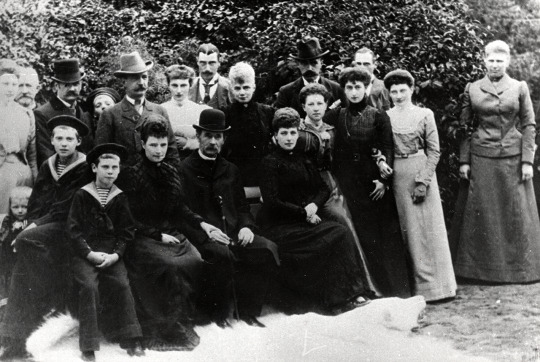
Gathering of Danish Royal Family.
Maria Feodorovna, nee Dagmar of Denmark, is seen in the front row next to her father and nephews. Maria Georgievna, nee of Greece and Denmark, is between her aunt Alexandra and cousin Maud. Behind her is her (future? not sure of the date on this one) husband, Georgiy Mikhailovich.
#romanov#danish royal family#maria feodorovna#maria georgievna#georgiy mikhailovich#alexandra of denmark#christian ix of denmark#frederick viii of denmark#alexandrine of mecklenburg schwerin#thyra of denmark#maud of norway#christian x of denmark#my collection
22 notes
·
View notes
Text

Cropped photo of Minnie and her dear papa! ❤️🩹
22 notes
·
View notes
Text
George Alexandrovich & the ghost 
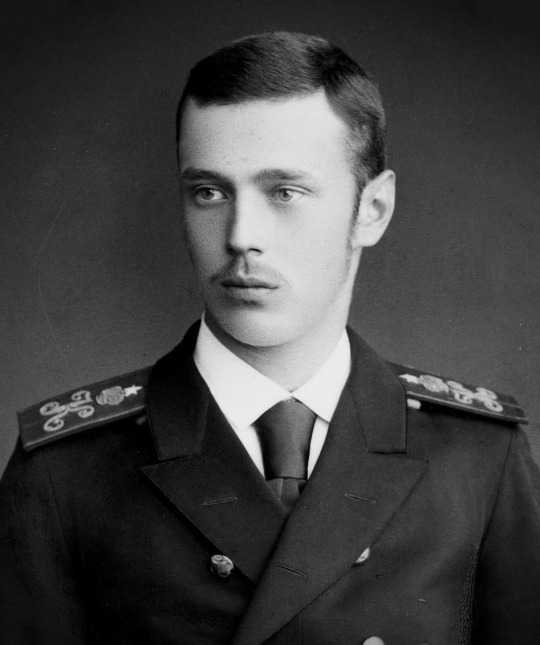
“During one of our stays in Frederiksborg a funny thing happened true ghost story. It was a warm night and we all of our cousins went out into the garden and sat down on a big bench which was just right for all of us. It was already getting dark, and we were talking quietly and enjoying a quiet and beautiful night when we saw something white among the trees. As it got closer it seemed to get taller and thinner. We sat in amazement. The castle was supposed to be haunted. Our legs trembled. When the creature was about twenty paces from us, we all jumped up and rushed into the house except only one of the boys bravely stayed: Grand Duke George Romanov, second son of Tsar Alexander III, stood on the bench and waited, and when what we thought was a ghost approached him He jumped and landed on it. The ghost collapsed, and my cousin began to beat and beat with all his might. He stopped when he heard faint cries, "It's me!" We can imagine the amazement and horror of poor George when he learned that it was our grandfather. He wrapped himself in a sheet, and put a long broom over his head. So the ghost seemed tall and thin. The grandfather had commended his grandson for his bravery, and called everyone cowards.” - Maria georgeiovna

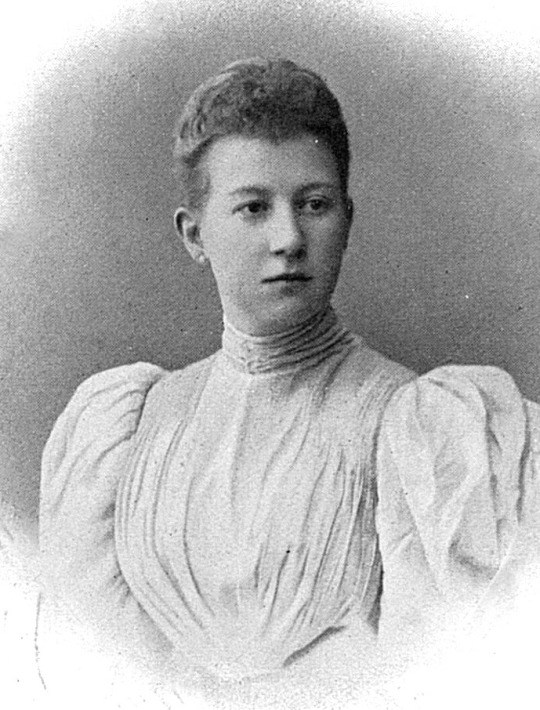
#george alexandrovich#Maria of Greece and Denmark#Christian IX#danish royal family#grand duke george#Maria Georgievna
43 notes
·
View notes
Text
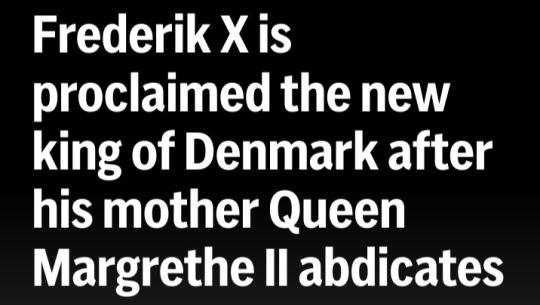
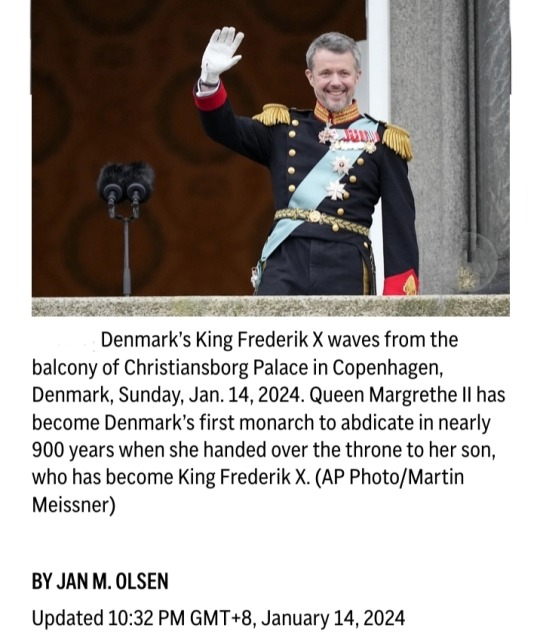
COPENHAGEN, Denmark (AP) — Denmark’s prime minister proclaimed Frederik X as king on Sunday after his mother Queen Margrethe II formally signed her abdication, with massive crowds turning out to rejoice in the throne passing from a beloved monarch to her popular son.
Margrethe, 83, is the first Danish monarch to voluntarily relinquish the throne in nearly 900 years.
Many thousands of people gathered outside the palace where the royal succession was taking place, the mood jubilant as the Nordic nation experienced its first royal succession in more than a half-century, and one not caused by the death of a monarch.
Wearing a magenta outfit, Margrethe signed her abdication during a meeting with the Danish Cabinet at the Christiansborg Palace, a vast complex in Copenhagen that houses the Royal Reception Rooms and Royal Stables as well as the Danish Parliament, the prime minister’s office, and the Supreme Court.

Prime Minister Mette Frederiksen next proclaimed Frederik king from the balcony of the palace before thousands of people — subjects of a kingdom where the trappings of royalty are mostly symbolic in today’s modern era of constitutional democracy.
Frederiksen read the proclamation three times, which is the tradition, as Frederik stood beside her wearing a ceremonial military uniform adorned with medals.
He was then joined on the balcony by new Queen Mary and the couple’s four children, and the crowd spontaneously sang the national anthem.
“My hope is to become a unifying king of tomorrow,” Frederik said. “It is a task I have approached all my life.”
“I want to return the trust I meet. I need trust from my beloved wife, you and that which is greater than us,” the new king said.
Frederik then kissed Mary and another great cheer rose from the crowd.

The abdication document was earlier presented to Margrethe as she sat at a massive table covered in red cloth around which royals and members of the Danish government were seated.
Frederik sat beside her.
After signing it, Margrethe rose and gestured to Frederik to take her place.
“God save the king,” she said as she left the room.
The abdication leaves Denmark with two queens: Margrethe keeps her title, while Frederik’s Australian-born wife becomes Queen Mary.
Frederik and Mary’s eldest son Christian, 18, has become crown prince and heir to the throne.
Christian handed Margrethe her walking stick as she departed from her abdication ceremony.
Citing health issues, Margrethe announced on New Year’s Eve that she would step down, stunning a nation that had expected her to live out her days on the throne, as is tradition in the Danish monarchy.
Margrethe underwent major back surgery last February and didn’t return to work until April.
Even the prime minister was unaware of the queen’s intentions until right before the announcement.
Margrethe had informed Frederik and his younger brother Joachim just three days earlier, the Berlingske newspaper wrote, citing the royal palace.

People from across Denmark gathered outside parliament, with many swarming streets decorated with red-and-white Danish flags.
Several shops hung photos of Margrethe and Frederik, while city buses were adorned with smaller Danish flags as is customary during royal events.
Many others across the kingdom of nearly 6 million people followed a live television broadcast of the historic event.
The royal guards’ music band made their daily parade through downtown Copenhagen, but wore red jackets, instead of their usual black, to mark major events.
Copenhagen resident Rene Jensen, wearing a replica of a royal robe and a bejeweled purple crown on his head, said that he expected Frederik to be “a king for the nation, representing us everywhere.”
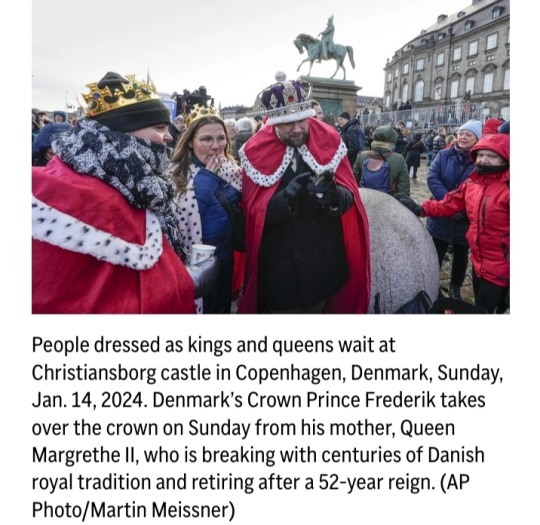
The last time a Danish monarch voluntarily resigned was in 1146, when King Erik III Lam stepped down to enter a monastery.
Margrethe abdicated on the same day of January that she ascended the throne following the death of her father, King Frederik IX, on 14 January 1972.
Denmark’s monarchy traces its origins to 10th-century Viking king Gorm the Old, making it the oldest in Europe and one of the oldest in the world.
Today, the royal family’s duties are largely ceremonial.

Australians also turned out on the streets of Copenhagen to celebrate one of their own becoming queen.
“I think it’s good that she’s not from royalty and has a normal Australian background. We can relate more to that, because she’s from a middle-class background, and we are too,” said Judy Langtree, who made the long journey from Brisbane with her daughter to witness the royal event.
A survey — commissioned by Denmark’s public broadcaster DR — published Friday showed that 79% of the 1,037 people polled by the Epinion polling institute said that they believed Frederik was prepared to take the reigns and 83% said they thought his wife Mary was ready to become queen.
The survey margin of error was 3 percentage points, DR said.
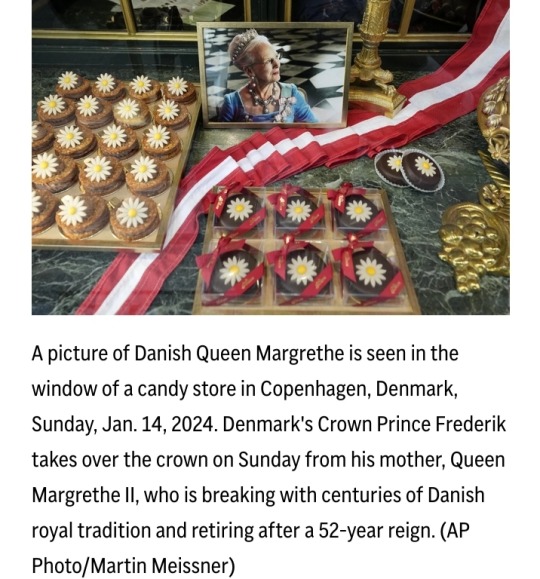
#Frederik X#Queen Margrethe II#Christiansborg Palace#Prime Minister Mette Frederiksen#King Erik III Lam#King Frederik IX#Gorm the Old#DR#AP#Danish Royal Family#House of Glücksburg#Denmark#Frederik André Henrik Christian
9 notes
·
View notes
Photo

“It must have been amazing to be a grandson of monarchs, Christian IX of Denmark and Queen Louise. Imagine every summer you would meet the Kings of Greece, the Russian Emperors and the future monarchs of the United Kingdom and Denmark, plus some of your cousins would also become monarchs and some of your cousins queen consorts. It must have been amazing to see all these people in one place and be able to talk to them.” - Submitted by cenacevedo15
36 notes
·
View notes
Text

Queen Alexandra with her father, King Christian IX of Denmark, and sister Thyra, Duchess of Cumberland and brother ‘Willie’ and his impressive moustache with his back turned.
(x)
39 notes
·
View notes
Text

King Christian IX of Denmark
French vintage postcard
#historic#photography#vintage#christian#sepia#photo#briefkaart#christian ix#french#ansichtskarte#denmark#king#postcard#postkarte#postkaart#carte postale#ephemera#postal#tarjeta
3 notes
·
View notes
Text
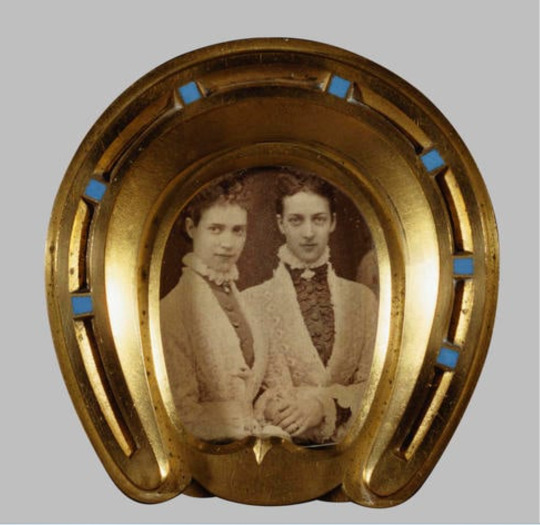

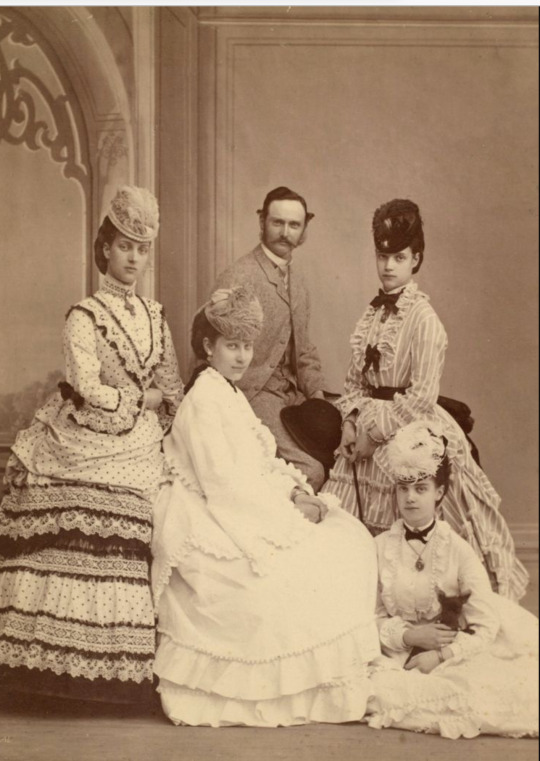


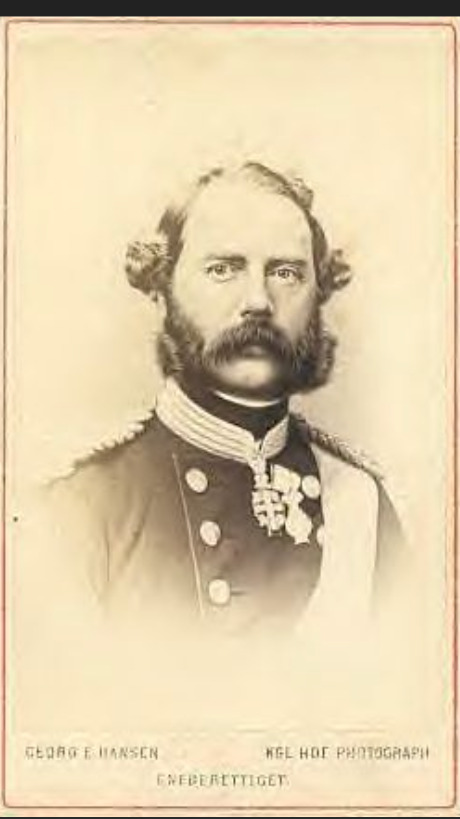
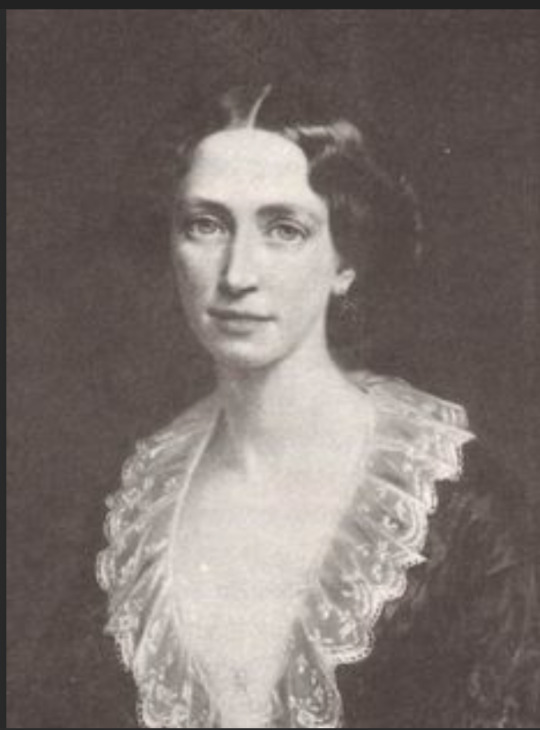
Photographs: 1. Alexandra and her younger sister Dagmar; 2. The Danish Royal Family: From left to right: Dagmar (Marie Feodorovna), the little one by Dagmar's knee should be Prince Valdemar, the youngest; standing in back of the child, the oldest male, future King Frederick VIII; King Christian the IX is in the middle, standing in back of his wife Louise; standing by Louise is Princess Thyra; next to Thyra is the future Queen Alexandra; standing in the back, between Thyra and Alexandra, is George, the future King of the Helenes; 3. In this picture, a very beautiful Princess Alexandra; sitting by her is Princess Lovisa of Sweden, the wife of Frederick, who is standing by her; next to Frederick is Dagmar, and sitting on the floor holding a little dog is Thyra; 4. Christian IX 5. Queen Louise; 6. Christian IX 7. Queen Louise
The Danish Royal Family
King Christian IX of Denmark (1818 - 1906) and Queen Louise of Denmark (1817 - 1898) nee Louise of Hesse-Kessel and their children
This Wednesday, a little love for the Danish Royal Family, who gave us Queen Alexandra of England, one of the most beautiful queens to sit on a throne since photography was created (no makeup, Botox, fillers, plastic surgery), and her sister, Empress Maria Feodorovna (Princess Dagmar of Denmark) one of the prettiest and most beloved Empresses of all the Russias.
So where did all that beauty come from? Most of us have seen photographs of Christian IX and Queen Louise in their older years. At least I had not seen them young. I looked for some photos, and I am including them here. Both of them were good-looking. Louise had a pretty face and beautiful eyes. And so did Christian! He was not bad-looking at all, tall and slim. The little cleft on Alexandra's chin apparently came from her father. The girls had good genes.
The House of Glücksburg, to which Christian IX and Queen Louise belonged, is a collateral branch of the German House of Oldenburg. Its members have reigned at various times in Denmark, Norway, Sweden, Iceland, Greece, and several northern German states.
King Christian IX and Queen Louise were double cousins. King Christian was called the "father-in-law of Europe" on account of the marriage of his children to foreign princes and princesses.
Current monarchs King Charles III of the United Kingdom, Queen Margrethe II of Denmark, and King Harald V of Norway, as well as former queens consort Ann Marie of Greece and Sofia of Spain, are patrilineal members of cadet branches of the House of Glücksburg. (gcl)
#romanov dynasty#danish royal family#Queen Louise of denmark#Louise of Hesse-Kessel#King Christian IX of Denmark#Princess Alexandra of Denmark#Princess Dagmar of Denmark#Princess Lovisa of Sweden and Norway#Thyra#Crown Princess of Hanover
18 notes
·
View notes
Text


The Danish Parliament
#københavn#folketinget#danish#denmark#copenhagen#culture#history#history lesson#amalienborg#christian IX
2 notes
·
View notes
Photo
You can also see Princesses Louise, Victoria, and Maud of Wales.
And I also believe that girl behind Maud whom of which is peaking out on the right, could possibly be Princesses Irene or Elisabeth of Hesse(?)

Royals from Denmark, England and Greece. Among them we can see Ernst Ludwig of Hesse, Alix of Hesse (later Tsarina of Russia, behind Ernst), Grand Duke Louis IV of Hesse, the Prince and the Princess of Weles, Prince George of Greece, King Christian of Denmark and others.
#grand duke ernest louis of hesse#ernest louis#empress alexandra feodorovna#alix of hesse#grand duke louis iv of hesse#king edward vii#queen alexandra#alexandra of denmark#prince george of greece and denmark#king christian ix of denmark#maud of wales#queen maud of norway#princess victoria of wales#princess louise duchess of fife#louise princess royal#danish royal family#british royal family#greek royal family#hessian grand ducal family#rare photo
31 notes
·
View notes
Text
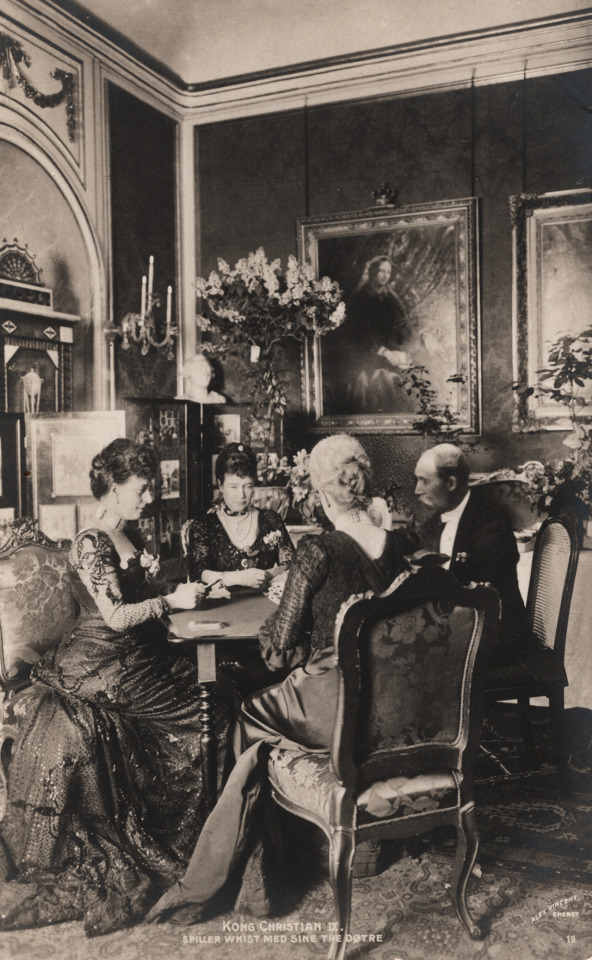
Maria Feodorovna playing cards with her father and sisters.
#romanov#danish royal family#maria feodorovna#christian ix of denmark#alexandra of denmark#thyra of denmark#british royal family#my collection
78 notes
·
View notes
Text
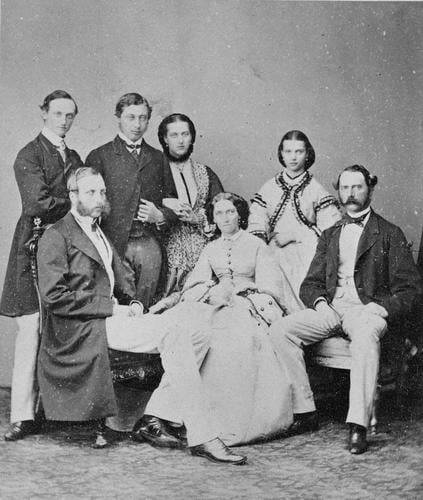
Royal Engagement photo of Princess Alexandra of Denmark and Albert Edward, Prince of Wales.
(Left -> Right)
Top: Prince Frederick of Denmark, Albert Edward, Prince of Wales, Princess Alexandra of Denmark, and Princess Dagmar of Denmark.
Bottom: Prince Philippe of Belgium, Crown Princess Louise of Denmark, and Crown Prince Christian of Denmark.
#king frederick viii of denmark#king edward vii#queen alexandra#alexandra of denmark#empress maria feodorovna#dagmar of denmark#prince philippe of belgium#queen louise of denmark#louise of hesse-kassel#king christian ix of denmark#royal engagement#rare photo
21 notes
·
View notes
Text

The Marriage of Nicholas II, Tsar of Russia, 26th November 1894
Artist: Laurits Regner Tuxen (Danish, 1853-1927)
Date: 1895-1896
Medium: Oil on canvas
Collection: Royal Collection Trust, United Kingdom
Description
The wedding between Nicholas II and Princess Alix of Hesse took place in the Imperial Chapel of the Winter Palace on 26 November 1894, just over twenty years after the marriage of the Tsar's aunt in the same chapel. The wedding was announced in April that year and was to take place on the Empress Marie Feodorovna's birthday. Tragically, Emperor Alexander III died of kidney disease on 1 November, and the court was thrown into mourning with the exception of the day of the marriage.
The royal couple stand, holding lighted candles, whilst the Metropolitan Archbishop of St Petersburg, Mgr Palladius, makes the sign of the cross before them. Ella, (Grand Duchess Elizabeth Feodorovna), writing to her grandmother, Queen Victoria, described her sister's dress as 'embroidered silver cloth Russian court dress & very pretty', helpfully including a sketch. She added that 'Alix being tall will look perfectly lovely'. She wears a kokoshnik tiara and a small diamond crown, beneath which is a wreath of orange blossom, her imperial gold-embroidered mantle is lined with ermine. The Tsar is dressed in the uniform of a Hussar. In the background George I, King of Greece stands to the left of Christian IX, King of Denmark, who looks towards his daughter, the Dowager Empress; the Princess of Wales, and the Queen of Greece. The Prince of Wales can be seen dressed in the uniform of Russian Dragoons to the right of the portrait.
#painting#wedding#marriage#nicholas ii#tsar of russia#princess alice of hesee#imperial chapel#winter palace#royal couple#lighted candles#archbishop#embroidered silver cloth dress#russian court dress#kokoshnik tiara#diamond crown#orange blossom#imperial gold embroidered mantle#ermine#uniform of a hussar#george i king of greece#dowager empress#princess of wales#queen of greece#uniform of russian dragons#portrait#oil on canvas#artwork#fine art#russian history#danish painter
34 notes
·
View notes
Text
May baby Alexander rest in peace😖💙

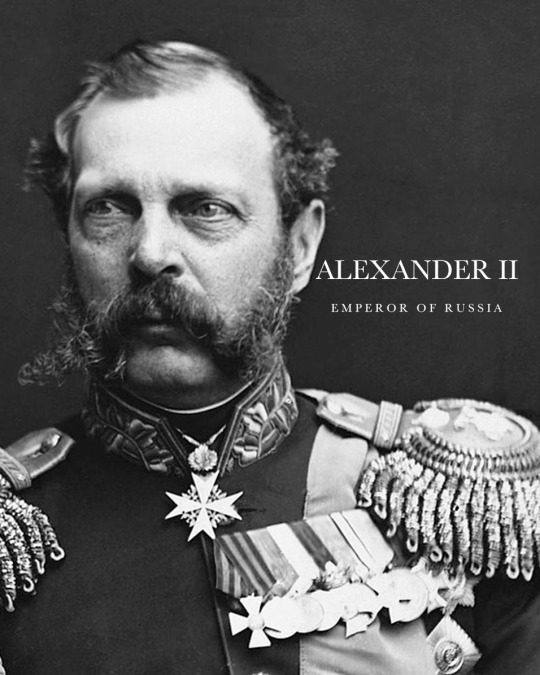



GODPARENTS OF GRAND DUKE ALEXANDER ALEXANDROVICH
Grand Duke Alexander Alexandrovich was born on 7 June 1869 in the Alexander Palace, Saint Petersburg in Tsarskoe Selo, Saint Petersburg. He was the second son of the Tsesarevich and Tsesarevna of Russia, later Emperor Alexander III and Empress Maria Feodorovna. He was christened on 21 June in Grand Palace Church, Tsarskoye Selo, by the Confessor of Their Imperial Majesties.
ALEXANDER II, EMPEROR OF RUSSIA - the Russian Emperor, his grandfather, was one of his listed godparents. He became the Emperor of All Russia in 1855. Alexander’s most significant reform as emperor was the emancipation of Russia’s serfs in 1861, for which he is known as Alexander the Liberator.
KING CHRISTIAN IX OF DENMARK - the Danish King who had ascended the throne just a few months after the grand duke was born, was one of his godparents. His initial unpopularity at the start, and the many years of political strife, where the king was in conflict with large parts of the population, his popularity recovered towards the end of his reign, and he became a national icon due to the length of his reign.
GRAND DUCHESS MARIA ALEXANDROVNA OF RUSSIA, DUCHESS OF EDINBURGH, DUCHESS OF SAXE-COBURG AND GOTHA - His 15-year-old paternal aunt, the grand duchess, stood as one of his godparents. She later married Prince Alfred, Duke of Edinburgh (son of Queen Victoria), with whom she had five children, including the future Queen Marie of Romania. She was to be the only Romanov to marry in the British royal family.
PRINCESS ALEXANDRA OF DENMARK, PRINCESS OF WALES, QUEEN CONSORT OF THE UNITED KINGDOM - His maternal aunt, the popular and beautiful Princess of Wales, stood as another of his godparents. Largely excluded from wielding any political power, she unsuccessfully attempted to sway the opinion of British ministers and her husband's family to favour Greek and Danish interests. In 1901, upon the death of her mother-in-law Queen Victoria, her husband ascended the throne and thus she became the Queen consort of the United Kingdom.
Grand Duke Alexander Alexandrovich died of bacterial meningitis in 1870, one month before his first birthday. (Source)
#grand duke alexander alexandrovich#tsar alexander ii#king christian ix of denmark#grand duchess maria alexandrovna#maria duchess of edinburgh#queen alexandra#alexandra of denmark#godparents
26 notes
·
View notes
Text
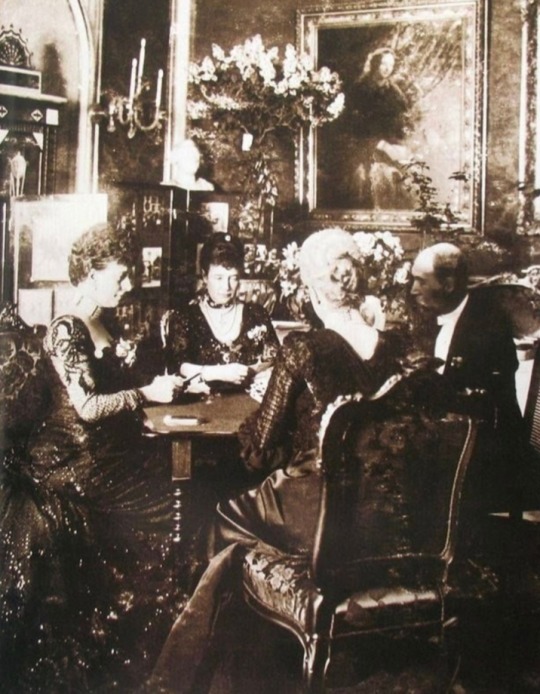
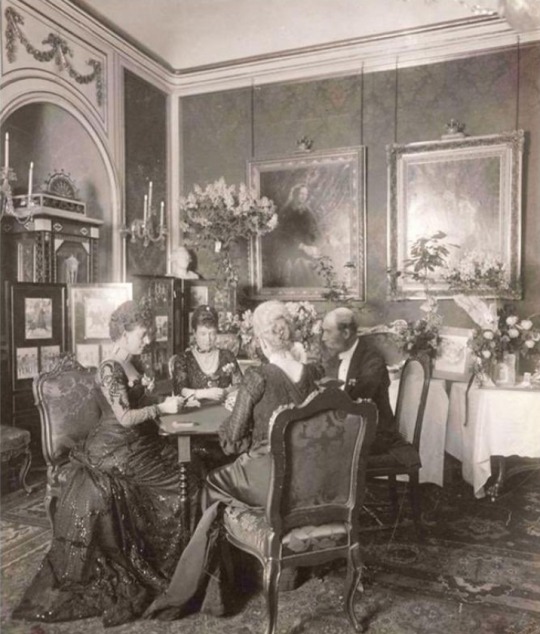

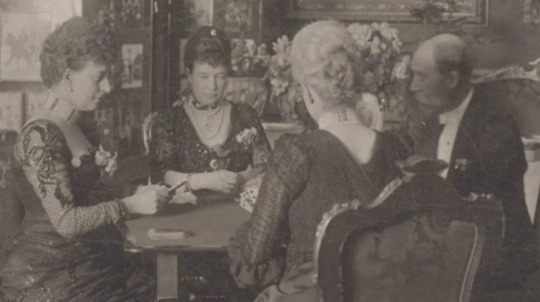
Queen Alexandra of the United Kingdom, Empress Maria Feodorovna of Russia, Princess Thyra, and their father King Christian IX of Denmark playing cards.
—
Alexandra of Denmark (Alexandra Caroline Marie Charlotte Louise Julia; 1 December 1844 – 20 November 1925) was Queen of the United Kingdom and the British Dominions, and Empress of India from 22 January 1901 to 6 May 1910 as the wife of King-Emperor Edward VII.
—
Maria Feodorovna (26 November 1847 – 13 October 1928), known before her marriage as Princess Dagmar of Denmark, was Empress of Russia from 1881 to 1894 as the wife of Emperor Alexander III.
She was the second daughter of Christian IX of Denmark and Louise of Hesse-Kassel.
Maria's eldest son became the last Russian monarch, Emperor Nicholas II.
Maria lived for 10 years after Bolshevik functionaries murdered Nicholas and his immediate family in 1918.
—
Princess Thyra of Denmark (Thyra Amalie Caroline Charlotte Anna; 29 September 1853 – 26 February 1933) was the youngest daughter and fifth child of Christian IX of Denmark and Louise of Hesse-Kassel.
In 1878, she married Ernest Augustus, the exiled heir to the Kingdom of Hanover.
As the Kingdom of Hanover had been annexed by Prussia in 1866, she spent most of her life in exile with her husband in Austria.
—
Christian IX (8 April 1818 – 29 January 1906) was King of Denmark from 15 November 1863 until his death in 1906.
From 1863 to 1864, he was concurrently Duke of Schleswig, Holstein and Lauenburg.
#Alexandra of Denmark#Queen Alexandra of the United Kingdom#Empress Maria Feodorovna of Russia#Princess Dagmar of Denmark#Princess Thyra of Denmark#King Christian IX of Denmark#Prince Christian of Schleswig-Holstein-Sonderburg-Beck#House of Glücksburg#House of Hesse#House of Romanov#House of Hanover#British Royal Family#Danish Royal Family#Russian Royal Family
10 notes
·
View notes
Text

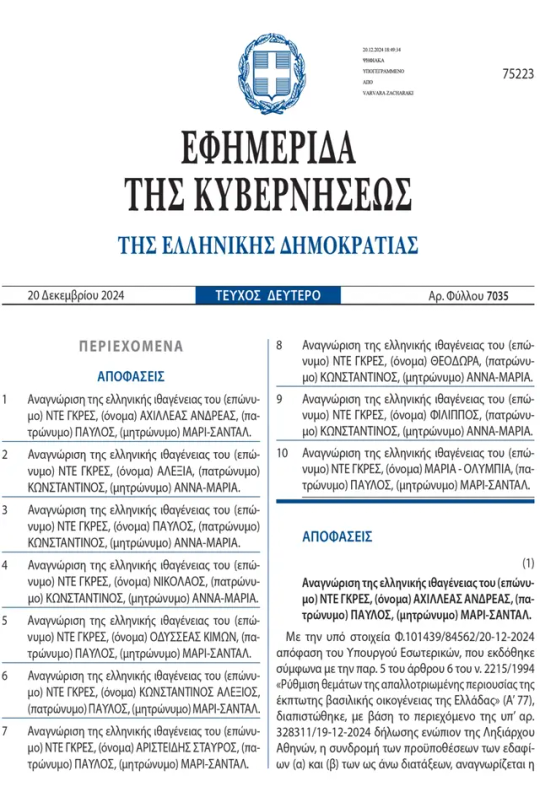
The Greek Royal Family have been granted Greek citizenship, 50 years after the end of the monarchy. Family members signed a declaration on Thursday (19 Dec 2024) acknowledging the republican government and adopting a new surname, “Ντε Γκρες” or “De Grèce” – French for “of Greece”. 10 members of the family were granted citizenship on Friday (20 Dec 2024) including the five children of the late Constantine II and Queen Anne-Marie – Princess Alexia, Crown Prince Pavlos, Prince Nikolaos, Princess Theodora and Prince Philippos – as well as Pavlos and Crown Princess Marie-Chantal children; Princess Maria-Olympia, Prince Constantine-Alexios, Prince Achileas-Andreas, Prince Odysseas-Kimon and Prince Aristides-Stavros. Queen Anne-Marie, a sister of Margrethe, Queen of Denmark did not apply for citizenship. In recent years the family have frequently visited Greece, having been exiled and banned from the country (up to the 1990s) in order to suppress their support and issues regarding surname and restitution of property. Since their exile The Greek Royal Family have mainly lived in the United Kingdom. While their titles are not officially recognised by the Greek government, as descendants of the male line of Christian IX of Denmark they are entitled to use Prince/Princess of Denmark titles which is recognised by the Danish monarchy and among other European royal families.
39 notes
·
View notes